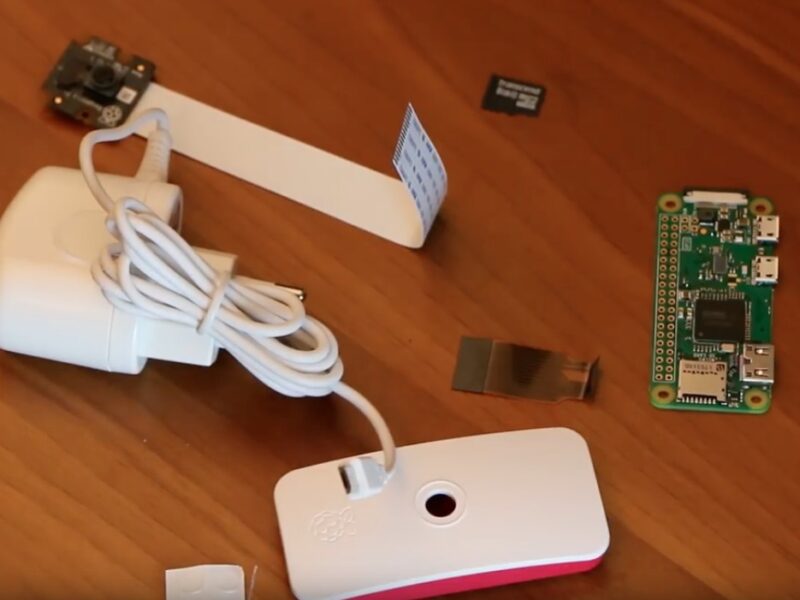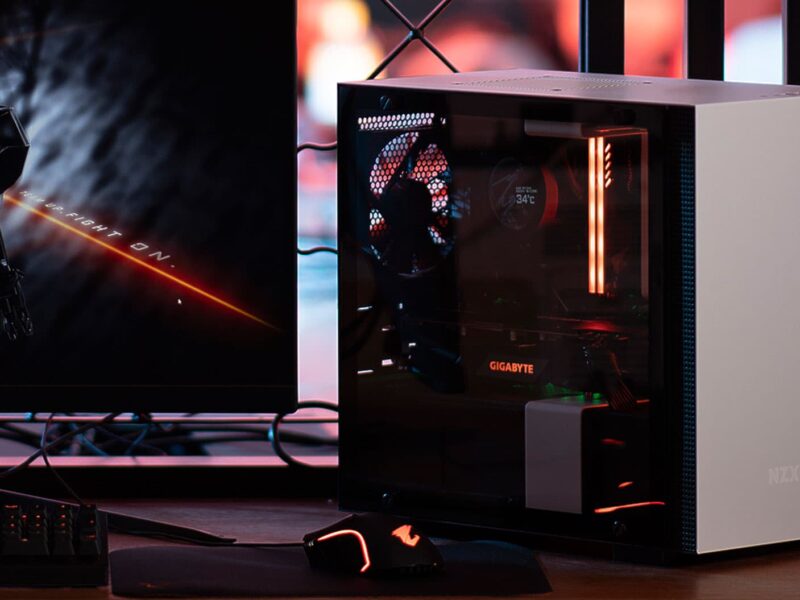When choosing a mini ITX motherboard there are a few things you need to take into account. The first is the socket type. Make sure the motherboard you choose has a socket that is compatible with the CPU you plan to use.
The second thing to consider is the form factor. Mini ITX motherboards come in both 6.7 x 6.7 inches and 4.7 x 4.7 inches sizes. Make sure to choose the right form factor for your case.
Third, you need to decide on the features you want in a motherboard. Do you need built-in Wi-Fi? How about an onboard graphics card? Make sure to pick the features that are important to you.
Finally, make sure to check the price and compare different options before making your final decision. By taking all of these factors into account, you can be sure to choose the right mini ITX motherboard for your needs.
Should you build a mini itx PC?
Building a mini itx PC is a great way to save on space and reduce clutter. But not all MicroATX motherboards are created equal. Here are some things to keep in mind
IMB-9454G
IMB-9454G micro-ATX Motherboard with Intel Core 2 Duo, Pentium® 4/ Pentium® D/ Celeron® D FSB 533/800/1066MHz CPU, VGA, Dual PCIe GbE, SATA II, USB 2.0, 6 COM, & Audio

Features
micro-ATX Motherboard with Intel Core 2 Duo, Pentium® 4/ Pentium® D/ Celeron® D FSB 533/800/1066MHz CPU, VGA, Dual PCIe GbE, SATA II, USB 2.0, 6 COM, & Audio
Intel® Core 2 Duo, Pentium® 4/ Pentium® D/ Celeron® D CPU support up to FSB 533/800/1066MHz
VGA integrated in Intel® 945G
Dual channel DDRII 533/667MHz support up to 4GB
FDD, LPT, 4 x SATA II, 8 x USB 2.0 and 6 x COM
When choosing a mini itx motherboard:
1. Choose a motherboard that supports the CPU and graphics card you want to use.
2. Make sure the motherboard has enough SATA ports for your storage needs.
3. Look for a motherboard with good built-in audio and networking features.
4. Choose a motherboard that fits your budget.
5. Check reviews to see what other users think of the motherboard.
Following these tips will help you choose the right mini itx motherboard for your needs.
microatx motherboard single board computers.
When it comes to choosing a microATX motherboard, you’ll want to keep a few things in mind. First, consider what type of CPU and graphics card you want to use. Make sure the motherboard you choose supports those components. You’ll also want to make sure the motherboard has enough SATA ports for your storage needs. Additionally, look for a motherboard with good built-in audio and networking features. Finally, choose a motherboard that fits your budget. Checking reviews from other users can also be helpful in making your decision. following these tips will help ensure you choose the best microATX motherboard for your needs. single board computers MicroATX motherboard
MANO300 – Celeron N3160 CPU
MANO300 – Celeron N3160 CPU Mini-ITX SBC with Intel® Celeron® Processor N3160 (up to 2.24 GHz) SoC,
VGA/HDMI/LVDS, USB 3.0, Mini PCIe Card, mSATA, and HD Audio

Features
Intel® Celeron® processor N3160 2.24 GHz (Braswell)
2 DDR3L-1600 SO-DIMM, up to 8GB
PCI Express Mini Card slot and PCIe x1
4 USB 3.0 and 2 USB 2.0 ports
1 SATA-600, 1 mSATA and 1 SDXC
6 COM ports
12 VDC and STD ATX
VGA,HDMI and LVDS with triple-view supported
MANO842 – Celeron J1900 CPU
MANO842 – Celeron J1900 CPU Mini-ITX with Intel® Celeron® Processor J1900 (up to 2.42 GHz), VGA/HDMI/LVDS, USB 3.0, Mini PCIe Card and HD Audio

Features
Intel® Celeron® processor J1900 2.0 GHz
1 DDR3L-1333 SO-DIMM, up to 8GB
PCIe x1 supported
1 USB 3.0 and 5 USB 2.0 ports
1 SATA-300 and 1 mSATA slots
6 COM ports
12 VDC and ATX
VGA/HDMI/LVDS with dual-view supported
The best mini itx motherboards for gaming
Most microATX motherboards are not designed for gaming. However, there are a few that are. Here are some of the best options available if you are looking for a mini ITX motherboard for gaming.
The first option is the Gigabyte GA-Z170N-Gaming 5 motherboard. This motherboard is designed for gamers and features a range of features that make it perfect for gaming. These include an Intel Z170 chipset, support for DDR4 memory, and 4K resolution support.
Another great option is the ASRock Fatal1ty Z170 Gaming-ITX/ac motherboard. This motherboard also features an Intel Z170 chipset and supports DDR4 memory. It also has built-in WiFi and a range of other features that make it perfect for gaming.
Finally, the ASUS ROG Strix Z270I Gaming motherboard is another great option. This motherboard also features an Intel Z270 chipset and supports DDR4 memory. It also has a number of features that make it perfect for gaming, including Asus’s Aura Sync RGB lighting system.
These are just a few of the best microATX motherboards for gaming. If you are looking for a mini ITX motherboard that is designed for gaming, these are some of the best options available. Choose the one that best suits your needs and budget and you’ll be able to enjoy gaming on your PC like never before.
The pros and cons of using a mini itx motherboard
A microATX motherboard is a great choice for single board computers because it offers more expansion options than a mini-ITX motherboard. A microATX motherboard has two PCI slots and four DDR3 DIMM slots, which is double the amount of expansion slots that are available on a mini-ITX motherboard. This makes it possible to install a wider range of components, such as a video card and a network card, on a microATX motherboard.
However, microATX motherboards are larger than mini-ITX motherboards, so they may not fit in some small form factor cases. Additionally, microATX motherboards typically require more power than mini-ITX motherboards, so you will need to make sure that your power supply can handle the additional load. Overall, a microATX motherboard is a great choice for a single board computer if you need the extra expansion options that it provides.
Pro’s
There are several benefits to using a mini itx motherboard. One of the primary advantages is that they are smaller and take up less space than traditional microatx or full-sized ATX motherboards. This can be important for cases where there is limited space, such as in a home theatre PC or an all-in-one desktop.
Another advantage of using a mini itx motherboard is that they tend to be more power efficient than larger boards. This can translate into longer battery life for laptops or reduced energy costs for desktops. Additionally, mini itx motherboards often include features that are not found on larger boards, such as integrated wireless networking and Bluetooth support.
Finally, mini itx motherboards are often cheaper than their MicroATX or ATX counterparts. This can make them an attractive option for budget-minded consumers.
Cons
Mini ITX motherboards have many pros over microATX and full-sized ATX motherboards, but there are a few cons to using them as well. One of the biggest drawbacks is that they often have fewer ports and expansion slots than larger boards. This can make it difficult to connect all the devices you need or to add components down the road.
– Form factor: Make sure the motherboard you choose fits in the case you have or want. Mini ITX boards are much smaller than microATX or full-sized ATX boards, so they won’t fit in all cases.
– Ports and expansion slots: Take a look at the number and types of ports and expansion slots on the motherboard. This will determine how many devices you can connect, and what kind of components you can add down the road.
– Power supply: Check to see how much power the motherboard’s power supply can provide. You’ll need to make sure it can handle any high-powered components you want to use.
– Price: compare prices between different mini ITX motherboards to find the best value for your needs.
Keep these factors in mind when choosing a mini ITX motherboard, and you’ll be able to find the perfect board for your next build.




